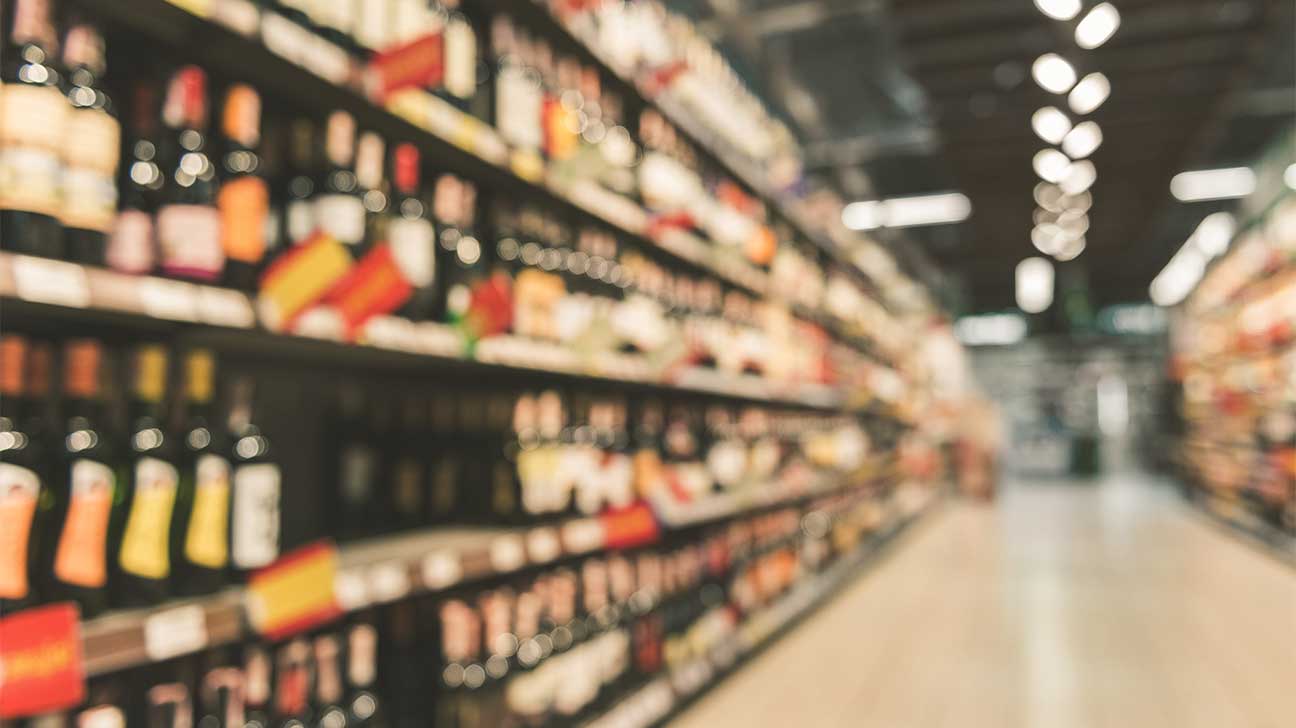
A recent proposal in the Oregon Legislature to raise the price of alcohol over five years to $.10 per bottle of beer and $.17 per glass of wine is the latest effort to address alcohol use disorders (AUD).
Other states in the union have considered or are considering similar measures as a way to reduce alcohol consumption and related deaths that rose sharply during the pandemic.
The goal is usually two-fold: decrease alcohol consumption and increase funding for alcohol treatment.
Oregon’s Proposed Bill To Increase The Price Of Alcohol
In Oregon, the Alcohol Harm Reduction Act, which was introduced to the legislature in March of 2023, calls for an increase in the cost of beer and wine.
The goal is to fund immediate-access Oregon alcohol detox centers and treatment for people who need it.
This reflects the disparity in both Oregon and the United States in general between those who have AUD and those who actually get treatment.
The revenue from the increase would also go toward education on the health impacts of:
- alcohol
- fentanyl
- methamphetamines
- cannabis
Proposed Breakdown Of Revenue From Alcohol Sales
The revenue from the proposed Alcohol Harm Reduction Act is earmarked to address a number of areas.
60% of the funds would be broken down like this:
- 25% for creating immediate access to alcohol detox and treatment centers
- 20% for certified county Public Health Department specialists in middle and high schools
- 15% to the Oregon Public Health Authority for public education campaigns
The remaining 40% would go toward:
- consumer education
- relief for families impacted by alcohol abuse
- support for police staffing of certified peer mentors
- funding state police in efforts to shut down cannabis cartels
Oregon And Alcohol Sales
Oregon, which has no sales tax, has the lowest tax on alcohol of any state in the union.
Possibly, this is one of the reasons that the state is considered a craft-brew paradise and an up-and-coming wine producer.
Perhaps not coincidentally, Oregon’s third leading cause of preventable death is excessive use of alcohol.
Oregon also has some of the least accessibility programs for the treatment of alcohol use disorder. It is estimated that 18% of Oregonians need addiction treatment but do not get it.
Other States That Are Proposing Alcohol Tax Increases
Oregon is not the only state in the U.S. that is proposing higher taxes on alcohol.
Several others have passed similar proposals or are looking at enacting them to decrease alcohol consumption and, in some cases, increase access to treatment, detox, or prevention.
Maryland
Maryland passed a law in 2011 that began a series of tax increases on alcohol sales that reached 9% later in the decade.
It was this law that, in part, helped inspire the Oregon legislators who wrote the Alcohol Harm Reduction Act.
Maryland has seen underage drinking and binge drinking decline by 26% and 17% respectively.
As of February 2023, the Maryland Legislature is considering raising the tax again from 9% to 10%.
Hawaii
In February 2021, the state of Hawaii passed a law that increased alcohol sales by $.10 a drink.
A year later, the University of Hawaii News revealed research suggesting the “dime-a-drink” law could decrease alcohol consumption and AUDs by 7% while raising $58 million in revenue.
Pennsylvania
The Pennsylvania Liquor Control Board (PLCB) recently enacted a 4% price increase on select alcohol products totaling 3,554.
As of January 15, 2023, for example, the cost of a 750-milliliter bottle of a top-selling brand of whiskey went from $18.99 to $19.79.
However, this was enacted mostly to offset the operating costs of the PLCB and could lead Pennsylvania legislators to push for privatizing alcohol sales.
New Mexico
A bill is currently being reviewed by the New Mexico Legislature that would increase the alcohol tax to $.25 per drink.
The revenue from this increase would go toward a new fund called the Alcohol Harms Alleviation Fund (AHAF), which would pay for recovery services, treatment, and prevention.
Wisconsin
In its Alcohol Prevention Report, the Alcohol Prevention Ad-Hoc Workgroup of the Wisconsin State Council on Alcohol and Other Drug Abuse Prevention Committee recommended an increase in the price of alcohol to reduce underage, binge, and heavy drinking.
Does An Increase In Alcohol Price Correlate To A Decrease In Alcohol Consumption?
The move of some states to increase the price of alcohol begs the question, does the increased cost of alcohol cause a decrease in consumption?
In general, yes. The figures from Maryland, as cited above, certainly suggest that higher-priced alcohol can affect consumption, particularly for youth and people who practice binge drinking.
Additionally, a 2017 study published in the British Medical Bulletin found that price increases in alcohol consistently lead to a decrease in consumption.
Similarly, the U.S. Department of Health and Human Services reports that government intervention in price and other restrictions on alcohol has led to a decrease in consumption.
Alcohol Consumption As A Result Of The Pandemic
The urgency to bring alcohol consumption and alcohol-related deaths under control stems from the pandemic, which led to shutdowns in many states.
The loss of jobs and increase in anxiety caused an increase in alcohol consumption nationally.
Deaths Related To Alcohol Consumption
Deaths related to alcohol consumption increased by 25% between 2019 and 2020. In previous years, the average increase was just 2.2% per year reaching as far back as 2000.
Deaths Related To Alcohol And Opioids
Between 2019 and 2020, the number of deaths that involved a combination of opioids and alcohol increased by about 41%.
Similarly, the number of deaths involving a combination of synthetic opioids (such as fentanyl) and alcohol increased by almost 60%.
Pandemic-Related Alcohol To-Go Policies
Ironically, as some states have pushed to increase the cost of alcohol sales, 26 states have moved to make alcohol-to-go sales permanent.
The to-go sale of alcohol was enacted on an emergency basis by many states during the pandemic to bolster struggling restaurants.
More than half of the states in the union have made these actions permanent, and another 12 have extended these policies.
Two studies, one done in New Zealand and one here in the U.S., have shown that there is a connection between these policies and increased alcohol consumption.
The Gap In Treatment
Many of the proposed laws are aimed at closing the gap in treatment by creating ways for immediate access among those who need it.
The journal Alcohol Research estimated in 2016 that about 10% of people who needed treatment were receiving it, leaving a 90% in need of treatment but unable to get it.
With funding from proposed revenues, Oregon and other states hope to close that gap by providing access to alcohol detox centers and treatment.
Find Treatment Today
If you or a loved one are battling an alcohol use disorder, you can find addiction treatment today. Call DetoxRehabs.net to learn more about your treatment options.
Article Sources- Albuquerque Journal
https://www.abqjournal.com/2572265/alcohol-tax-hike-on-the-table-as-new-mexico-takes-aim-at-excessive-drinking.html - Alcohol Research
https://www.ncbi.nlm.nih.gov/pmc/articles/PMC4872610/ - British Medical Bulletin
https://academic.oup.com/bmb/article/123/1/149/3958774 - Honolulu Civil Beat
https://www.civilbeat.org/2021/02/hawaii-lawmakers-advance-new-tax-on-alcoholic-drinks/ - Maryland Healthcare For All
https://healthcareforall.com/alcohol-tax-hike-passes-md-house-committee/ - National Institute of Alcohol Abuse and Alcoholism
http://niaaa.nih.gov/alcohols-effects-health/alcohol-topics/alcohol-facts-and-statistics/alcohol-related-emergencies-and-deaths-united-states - National Institute of Alcohol Abuse and Alcoholism
https://www.niaaa.nih.gov/news-events/research-update/deaths-involving-alcohol-increased-during-covid-19-pandemic#:~:text=In%202020%2C%20the%20first%20year,increase%20in%20over%2050%20years.&text=For%20those%20who%20were%20drinking,alcohol%20misuse%20are%20contributing%20factors. - Philly Voice
https://www.phillyvoice.com/pennsylvania-liquor-price-increase-january-2023-plcb-4-percent-3500-items-inflation-economy/ - Politico
https://www.politico.com/news/2022/12/30/alcohol-abuse-spiked-during-the-pandemic-treatment-hasnt-kept-up-00075153 - Substance Abuse Journal
https://www.tandfonline.com/doi/abs/10.1080/08897077.2022.2060432 - Tillamook Headlight Herald
https://www.tillamookheadlightherald.com/news/price-boost-temporary-increase-in-beer-wine-proposed-to-support-access-to-detox-treatment/article_e28221bd-14f4-550a-b47e-dd57238ffb9f.html - The University of Hawaii News
https://www.hawaii.edu/news/2022/02/07/dime-a-drink-alcohol-tax/ - U.S. Department of Health and Human Services
https://health.gov/sites/default/files/2021-11/Using%20Law%20and%20Policy%20to%20Reduce%20Alcohol-Related%20Deaths%20in%20the%20United%20States.pdf - Wisconsin State Council on Alcohol and Other Drug Abuse Prevention Committee Alcohol Prevention Ad-Hoc Workgroup
https://dhs.wisconsin.gov/scaoda/alcohol-prevention-report.pdf - WUSA
https://www.wusa9.com/article/news/local/maryland-alcohol-tax-to-10-percent-health-equity-resource-communities/65-1eaa6f91-0c55-4c9b-a493-bfde2c140838


